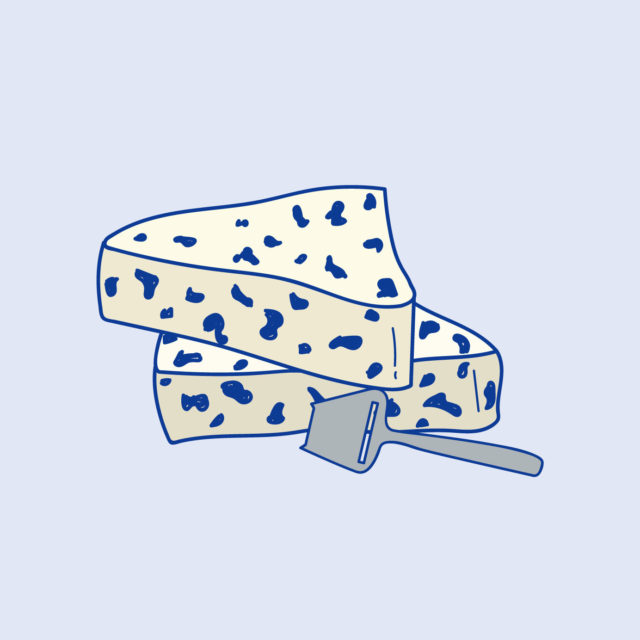Ask a room full of people, “Who likes cheese?” and you’ll get a host of fervently affirmative responses. Strangers will gush about the burrata they had last weekend, or the brie-style cheese they tried at a friend’s house.
Ask the same group of people who likes blue cheese, and responses are suddenly polarized. Some will grimace. Some will light up. While there’s still enthusiasm, it’s more scattered. The same number of folks who love it just as enthusiastically hate it.
Much like trying beer, wine, and most other grownup experiences, the first time we try blue cheese, it’s not much fun. We expect it to be friendly like the mild cheddars we grow up with. Instead, it’s peppery and aggressive. It’s like expecting to hear Mozart and Iron Maiden starts blasting instead.
Unfortunately, unlike beer, wine, and other grownup experiences, there’s not an established blue cheese culture in the U.S., so many of us don’t go in for seconds. There are also some pretty unbalanced, metallic blues out there (hint: those are the ones you should throw into salad dressings and sauces for wings). If that was your first blue cheese experience, it’s no wonder you assume the whole category must be awful.
Good news, though! This sophisticated cheese category has some entry-level options that overdeliver on flavor with not even a hint of that lightning-struck penny flavor the bad stuff has. One taste and even the most ardent of haters will happily go back for more.
If you’re looking for an easygoing blue, Gorgonzola is a great option because the blue mold used to make it, penicillium glacum, is relatively approachable. It tastes a bit like mushrooms growing in a cave. Its cousin, penicillium roqueforti (yes, like Roquefort), is the spicier type mold in many other, bolder blues.
Remember too that, like all cheese, blue cheese is a living thing. Even the mildest blue cheese can stink up a room if it’s overripe.
When you’re shopping, make sure to go somewhere with a staffed cheese counter so you can taste the cheeses you’re interested in and make sure they’re at their peak. Trained cheesemongers can also guide you to pairings that might balance your blues’ intensity, such as honey, caramel, or other sweets.
Ready to try a friendlier blue? Behold, six blue cheeses that will convert the haters.
Chiriboga Blue
Chiriboga blue is the cultured butter of blue cheeses — smooth, grassy, creamy, and a crowd favorite. Made in Bavaria by Arturo Chiriboga, this beautiful option is a cheesemonger standby for blue cheese skeptics. Smear on whole wheat bread and top with raspberry jam.
Caveman Blue
Toasty, hazelnutty Caveman Blue is the dream blue for pairing with chocolate and fruit preserves. Rogue Creamery in Oregon makes this (and a few other stunners), and oh, boy do they knock it out of the park. Smear onto a gingersnap or candied bacon.
Bay Blue
While Point Reyes probably didn’t set out to make a blue cheese with notes of salted caramel and cookie dough, that’s exactly what it did. Although this cheese is savory, and delicious with non-sweet things such as mushrooms, it also pairs beautifully with caramel.
Cambozola Black
Do you like brie-style cheeses? Great! You’ll probably like Cambozola. Camembert + Gorgonzola = Cambozola, and it’s exactly what it sounds like. All Cambozolas are mild and mushroomy, but Cambozola Black Label is ripened for a longer time in cooler temperatures, bringing out depth and complexity. It’s lovely with honey.
Bla Kornblomst
A bite of this decadent Danish beauty, whose name means “blue cornflower,” conjures up memories of sweet summer corn slathered in butter, with a bit of a caramel finish. It’s rich and creamy, but somehow still mousse-y too. In other words, it’s just gorgeous. Pair it with strawberry jam.
Blu di Bufala
Any cheese made with water buffalo milk will be more voluptuous than average, but Blu di Bufala is really something special. Made by Bruno Gritti in Bergamo, Italy, this square-shaped beauty is creamy and fruity, with notes of white pepper. Drizzle with a bit of maple syrup before serving.
